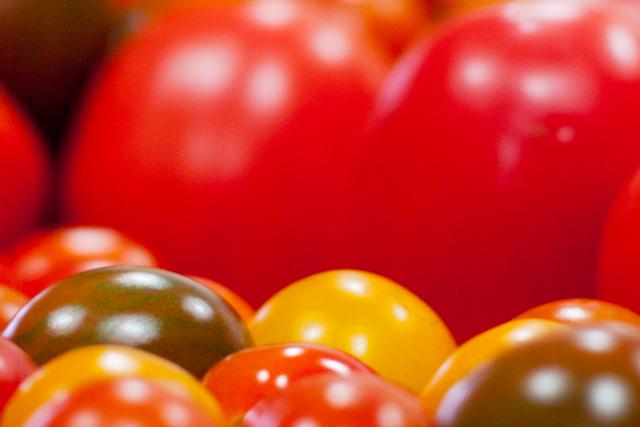The tomato most probably originated in the highlands of the western coast of South America. Most likely in Peru.
Description and Characteristics:
Interestingly, cherry tomatoes are the authentic direct ancestor of the standard size tomato that we know today in its different varieties.
The cherry tomato is an ever growing plant that can reach up to 10-12 m in a year grown if in a greenhouse. This creeper needs to be guided or staked. Its leaves are simple, with stalks and with a cleft limbo. All of the green part of the plant is composed of glandular hairs that when is touched emits a liquid with a characteristic smell. The flowers appear in clusters of variable numbers. The fruit is a tiny berry, resembling a cherry. They are picked when red.
This plant needs a lot of light and requires temperatures between 20-25 °C for its cultivation; temperatures above 35ºC cripple its growth and diminish production. It copes well with the cold, producing the first damages when the temperature goes below 6 °C.
Virtually all of that is produced is exported, the main consumer countries being: Germany (22%), France (20%), Switzerland (20%) United Kingdom (19.5%) and the Netherlands (9%).
Along with the Dutch cucumber, the cherry tomato is the most important crop in our municipality, amongst the crops grown in greenhouses.
NUTRITIONAL VALUE
It contains mainly water and much smaller amounts of carbohydrates and proteins, therefore has a low calorie content, although it is rich in vitamins and mineral salts. As for its vitamin content, tomatoes are very rich in vitamin C, especially the red ones and also in vitamin A. Amongst the minerals, potassium can be highlighted.
Tomatoes are also rich in carotenoids including lycopene –the natural pigment that gives the characteristic red color to tomatoes. In our diet we obtain lycopene from very specific foods, but primarily through the consumption of tomato and products that contain tomato (sauces, tomato sauce, tomato paste, ketchup, pizzas, juices). Lycopene has antioxidant properties and protecting human cells from oxidative stress, produced by the action of free radicals, which are one of the main causes of cardiovascular diseases, cancer and aging. Furthermore, it modulates the molecules responsible for the regulation of the cell producing a regression of certain cancerous lesions.
Areas where cherry tomato is cultivated in Motril:
It is a greenhouse crop, distributed between the greenhouse areas of Panata and Pataura, the North part of Motril, Zorreras, Tablones, the Garnatilla, Puntalón and Villanueva Plain and the Cañada in Torrenueva.

